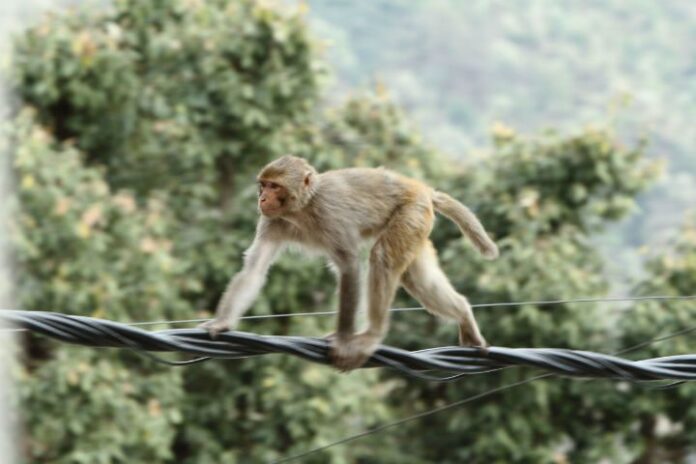Fiber apparently is a tasty treat for monkeys, squirrels and other critters
As the global explosion of data demand continues to pick up speed, network operators are racing to extend fiber backbone to keep up with customer demand. Large-scale fiber deployments are costly and subject to regulatory hurdles, which can slow down deployments. But network engineers in India are running into a fairly unique problem: hungry macaque monkeys.
You read that right. Monkeys living in the ancient Indian holy city of Varanasi are steadily chewing through fiber optic cables that are part of an $18 billion national plan to lay more than 430,000 miles of fiber.
The crowded city, home to some 2 million people, cannot accommodate installation of underground cables so installers have had to place the cables essentially in plain sight, along the banks of the Ganges River for instance, according to reports.
“We cannot move the temples from here,” communications engineer A.P. Srivastava told Reuters. “We cannot modify anything here, everything is built up. The monkeys, they destroy all the wires and eat all the wires.”
Srivastava said fiber cables had to be replaced just two months after initial deployment because of the monkeys.
Reuters also reports that another issue is a shortage of electricity, which is hampering the reliability of public Wi-Fi.
Indian Prime Minister Narendra Modi has pushed for connectivity on the subcontinent through a plan to connect a quarter-million village clusters with broadband and build 100 new smart cities by the end of the decade.
And while certainly unique, animals have been known to be a major cause of recurring damage to fiber networks. Back in 2011, representatives for Level 3 Communications alleged that squirrels cause about 17% of the damage, according to a report from The Atlantic.
Level 3’s Fred Lawler wrote in a then-current company blog post that the “furry little nut eater” was a major driver of network damage.
Lawler wrote that cable guards were helping combat the problem, but questioned the rodent’s affinity for fiber.
“Honestly, I don’t understand what the big attraction is or why they feel compelled to gnaw through cables,” Lawler noted. “Our guys in the field have given this some thought and jokingly suspect the cable manufacturers of using peanut oil in the sheathing.”

